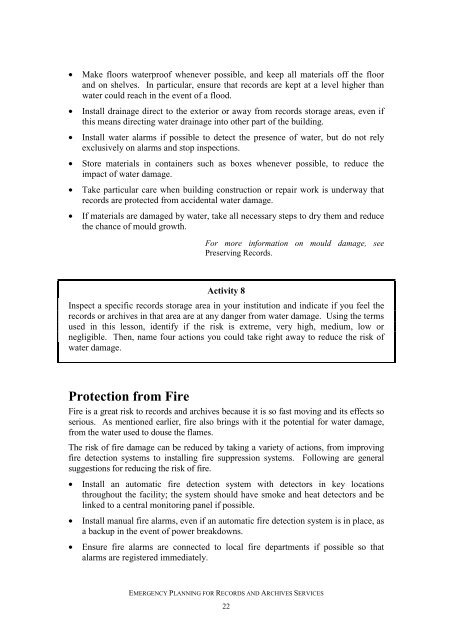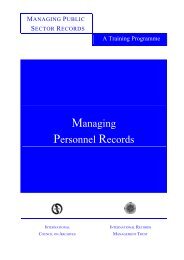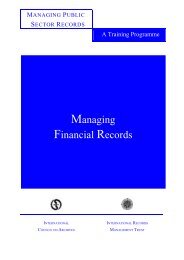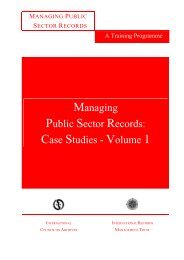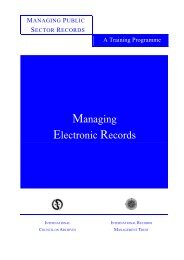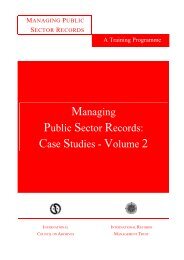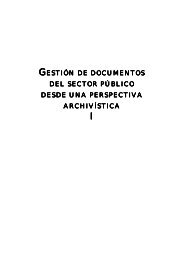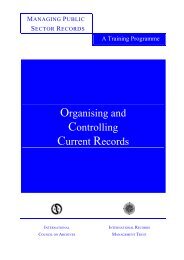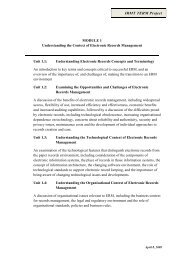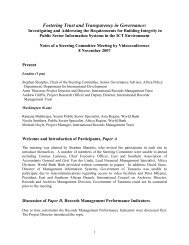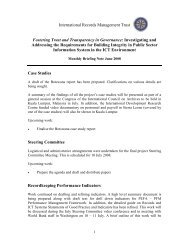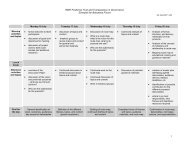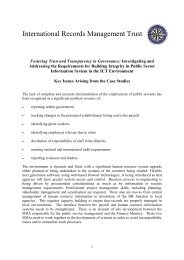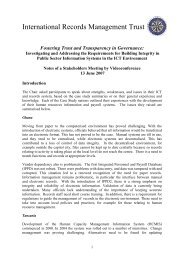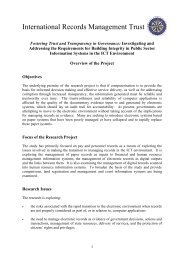disaster planning and control - International Records Management ...
disaster planning and control - International Records Management ...
disaster planning and control - International Records Management ...
Create successful ePaper yourself
Turn your PDF publications into a flip-book with our unique Google optimized e-Paper software.
• Make floors waterproof whenever possible, <strong>and</strong> keep all materials off the floor<br />
<strong>and</strong> on shelves. In particular, ensure that records are kept at a level higher than<br />
water could reach in the event of a flood.<br />
• Install drainage direct to the exterior or away from records storage areas, even if<br />
this means directing water drainage into other part of the building.<br />
• Install water alarms if possible to detect the presence of water, but do not rely<br />
exclusively on alarms <strong>and</strong> stop inspections.<br />
• Store materials in containers such as boxes whenever possible, to reduce the<br />
impact of water damage.<br />
• Take particular care when building construction or repair work is underway that<br />
records are protected from accidental water damage.<br />
• If materials are damaged by water, take all necessary steps to dry them <strong>and</strong> reduce<br />
the chance of mould growth.<br />
For more information on mould damage, see<br />
Preserving <strong>Records</strong>.<br />
Activity 8<br />
Inspect a specific records storage area in your institution <strong>and</strong> indicate if you feel the<br />
records or archives in that area are at any danger from water damage. Using the terms<br />
used in this lesson, identify if the risk is extreme, very high, medium, low or<br />
negligible. Then, name four actions you could take right away to reduce the risk of<br />
water damage.<br />
Protection from Fire<br />
Fire is a great risk to records <strong>and</strong> archives because it is so fast moving <strong>and</strong> its effects so<br />
serious. As mentioned earlier, fire also brings with it the potential for water damage,<br />
from the water used to douse the flames.<br />
The risk of fire damage can be reduced by taking a variety of actions, from improving<br />
fire detection systems to installing fire suppression systems. Following are general<br />
suggestions for reducing the risk of fire.<br />
• Install an automatic fire detection system with detectors in key locations<br />
throughout the facility; the system should have smoke <strong>and</strong> heat detectors <strong>and</strong> be<br />
linked to a central monitoring panel if possible.<br />
• Install manual fire alarms, even if an automatic fire detection system is in place, as<br />
a backup in the event of power breakdowns.<br />
• Ensure fire alarms are connected to local fire departments if possible so that<br />
alarms are registered immediately.<br />
EMERGENCY PLANNING FOR RECORDS AND ARCHIVES SERVICES<br />
22


